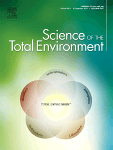Ellen Grace M. Funesto ab, Adam M. Lewis c, Andrew D. Turner c, Tom C. Cameron a, Michael Steinke a

Abstract
Warming could facilitate the intensification of toxic algal blooms, two important stressors for marine organisms that are predicted to co-occur more frequently in the future. We investigated the immediate and delayed effects of a heatwave and a simulated bloom (3 × 106 cells L-1) of the diarrhetic shellfish toxin (DST)-producing benthic dinoflagellate Prorocentrum lima on the survival, physiology (oxygen consumption rate, condition index, immune parameters), and toxin accumulation in the Pacific rock oyster Magallana (Crassostrea) gigas. Oysters exposed to both stressors contained higher mean DST concentrations (mean ± 1 SE: 173.3 ± 19.78 μg kg−1 soft tissue) than those exposed to P. lima bloom alone (120.4 ± 20.90 μg kg−1) and exceeded the maximum permitted levels for human consumption. Exposure to individual stressors and their combination modified the physiology of M. gigas. Oysters exposed to heatwave alone had significantly higher oxygen consumption rates (0.7 ± 0.06 mg O2 h−1 g−1) than the control (0.3 ± 0.06 mg O2 h−1 g−1). However, this was not observed in oysters exposed to both heatwave and P. lima (0.5 ± 0.06 mg O2 h−1 g−1). This alteration of the metabolic response to warming in the presence of P. lima may affect the ability of rock oysters to adapt to environmental stressors (i.e., a heatwave) to ensure survival. Immunomodulation, through changes in total hemocyte count, was observed in oysters exposed to P. lima alone and in combination with warming. Individual stressors and their combination did not influence the condition index, but one mortality was recorded in oysters exposed to both stressors. The findings of this study highlight the vulnerability of rock oysters to the predicted increased frequency of heatwaves and toxic algal blooms, and the increased likelihood of shellfish containing higher than regulatory levels of DST in warming coasts.
Graphical abstract

Keywords
Diarrhetic shellfish poisoning Harmful algal blooms Heatwave Prorocentrum lima Magallana gigas Climate change
Link to the Article